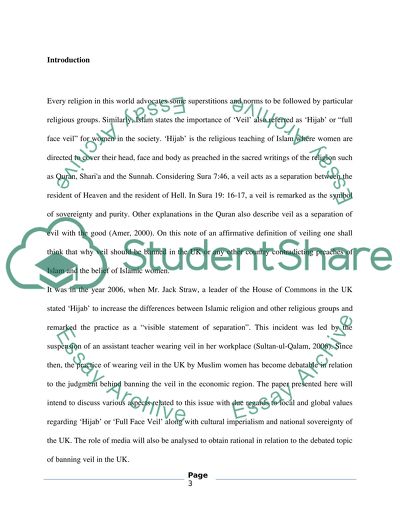Cite this document
(“Should Veil be Banned in the UK Essay Example | Topics and Well Written Essays - 2000 words”, n.d.)
Should Veil be Banned in the UK Essay Example | Topics and Well Written Essays - 2000 words. Retrieved from https://studentshare.org/journalism-communication/1432479-should-veil-be-banned-in-the-uk
Should Veil be Banned in the UK Essay Example | Topics and Well Written Essays - 2000 words. Retrieved from https://studentshare.org/journalism-communication/1432479-should-veil-be-banned-in-the-uk
(Should Veil Be Banned in the UK Essay Example | Topics and Well Written Essays - 2000 Words)
Should Veil Be Banned in the UK Essay Example | Topics and Well Written Essays - 2000 Words. https://studentshare.org/journalism-communication/1432479-should-veil-be-banned-in-the-uk.
Should Veil Be Banned in the UK Essay Example | Topics and Well Written Essays - 2000 Words. https://studentshare.org/journalism-communication/1432479-should-veil-be-banned-in-the-uk.
“Should Veil Be Banned in the UK Essay Example | Topics and Well Written Essays - 2000 Words”, n.d. https://studentshare.org/journalism-communication/1432479-should-veil-be-banned-in-the-uk.


